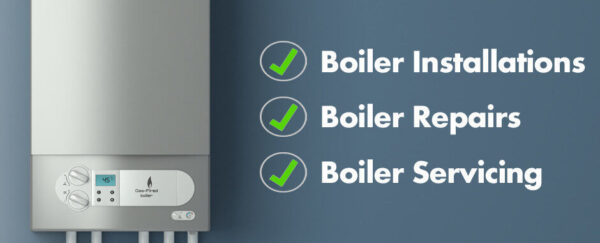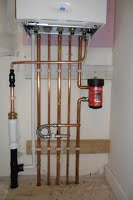Call us on 07769 555030
Boiler installation types
We at PCH Boiler Repair believe that if the boiler and central heating at your home are installed and maintained correctly they should give you trouble free comfort for years.
We are London based Plumbing & Gas Safe Engineers, we under take all types of domestic gas boiler installations in London.
Boiler installation types?
PCH Boiler Repair put together this small guide to explain to all our customers the most common boiler installation types
Combi boiler installation types
Combination boilers – more commonly known as combi boilers – are the most popular boiler installation types in the UK and provide heat and hot water with no need for water tanks or cylinders.
Prons
- you get unlimited heat and hot water when you need it but not simultaneously, as hot water take on priority.
- there’s no need for a tank in your loft.
- they don’t take up much space.
- combi boiler installations tend to be less expensive that system boiler installations
Cons
- The water pressure might be reduced if you need hot water from more than one tap at a time.
- No heating when there is demand for hot water, as diverter valve serve one side at a time.
Suitable for
Almost any home, but best for homes where lots of people won’t need lots of hot water at the same time, in other word, best for small flats house/few occupants, or large house with a few occupants.
System boiler installation types
System boilers – also known as sealed system – come with a water cylinder (which usually sits in an airing cupboard) and no water tank CWSC.
Pros
- there’s no need for a tank in your loft.
- you can get hot water from multiple taps at the same time.
Cons
- the hot water can run out and you’ll have to wait for it to reheat, unlike combi the water is heated as it rises to the property o the mains.
- you need to find room for the cylinder somewhere, it does take place, in airing cupboard .
Suitable for
- Homes which need to have hot water in more than one place at the same time two bathrooms for example .
Conventional (heat only) boiler installation types
Conventional boilers – also known as open vent-heat only- or regular boilers – have both a cylinder and a tank..
Pros
- You can get hot water from multiple taps at the same time.
Cons
- the hot water can run out and you’ll have to wait for it to reheat.
- you need to find room for the cylinder and the tank.
Suitable for
- Homes which need to have hot water in more than one place at the same time.
Condensing boiler is not boiler installation type
Condensing boilers aren’t strictly a boiler type – instead it’s an attribute your boiler can have in any of the modern boiler installation types, e.g. you can have a condensing combi boiler or a condensing conventional boiler.
Condensing boilers are very energy efficient because they capture some of the heat which would escape from the flue of a non-condensing boiler and re-use it. This means they get more heat from the same amount of fuel, which will save you money on your heating bills.
All new gas boilers have had to be condensing since 2005 (although in exceptional circumstances non-condensing boilers are allowed).
Energy-efficient boilers
All new boilers are energy-efficient – since 2010 all new boilers must be A-rated for energy efficiency, or at least 88% efficient.
The energy efficiency rating system for boilers is called SEDBUK (Seasonal Efficiency of Domestic Boilers in the UK). All boilers are assessed and given a rating to help you pick a boiler that is energy-efficient, or see how efficient your existing boiler is.
How else can you save on heating?
Getting an energy-efficient boiler is a great start to saving on heating, but what’s the purpose of heating your home if the heat is escaping?
Proper insulation and draught-proofing are vital accompaniments to any energy-efficiency upgrades you make on your heating system, and installing them need not be costly or time-consuming.
Draught-proofing
If you’re put off by the invasive nature of insulation installation then draught-proofing is for you. Draught-proofing starts with locating draughts around your home. Look for cracks around windows and doors or gaps between the doors and the frame.
Luckily plugging these gaps is as easy as visiting the DIY store. Self-adhesive foam strips are great for the borders around windows, whilst brushes can be attached to the bottom of doors or letterboxes to stop hot air escaping.
For larger cracks around window frames you can use sealant or putty to fill them up.
For bigger gaps like a chimney flue you will need specialist products. A chimney balloon simply inflates and blocks the chimney flue preventing cold air from rushing in, and hot air rushing out.
Insulation
Insulation is more expensive and complex to install, but it’s also an even bigger money-saver than draught-proofing making it well worth the effort.
An estimated 25% of the heat lost in a typical home is through the roof. Loft insulation is the most basic form and if you have a roof and attic in your home, it’s where you should start.
While new-build properties and those built in the last few years are likely to already have insulation installed, older properties may not. Even those built in the 70s and 80s may have insulation installed but won’t have sufficient levels.
You can buy loft insulation in DIY stores and install it yourself, but you can also have it installed by a professional.
Wall insulation is an even bigger money-saver but has to be installed by a professional, and the type of wall insulation will depend on what type of home you live in.
If your home was built after 1930 the chances are it has cavity walls, meaning an inner and an outer wall. Cavity wall insulation fills the gap between the walls by drilling holes in the outer wall and pumping in insulation.
If your home was built earlier then you most likely have solid walls. Solid wall insulation consists of packing insulation on the inside or outside of the walls and can be expensive to install, but it can also save a lot of money.

